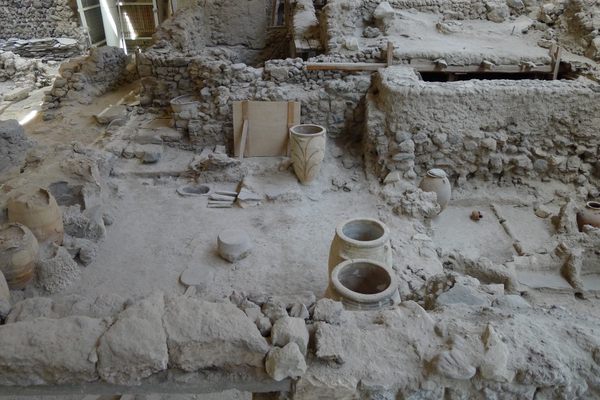How Lead Ink Could Decipher Ancient Scrolls Scorched by Vesuvius
The scrolls were recovered from the only library to survive ancient times.
Ancient scrolls give up their secrets https://t.co/bbnhq2vQ8l pic.twitter.com/2uw9O3UesQ
— BBC Science (@BBCScienceClub) March 22, 2016
There is renewed hope that we may someday be able to read hundreds of scrolls recovered after the eruption of Mount Vesuvius in A.D. 79, a disaster which destroyed several ancient cities, including Pompeii and Herculaneum, where the scrolls were found.
At least 800 of the scrolls were recovered in 1752, part of a larger library that is the only one to survive from ancient times. But their contents have long been a mystery. The scrolls are, in many cases, blackened rolls of papyrus that papyrologists have resisted even trying to unravel, lest their writings be lost forever.
On Monday, however, scientists said that they had made what potentially could be a massive breakthrough, a way of unlocking the scrolls not by unraveling but through the presence of lead in their ink. Scientists had already been studying the scrolls with X-ray machines, which may now be used to look specifically for lead.
It was previously thought that Greco-Roman inks did not contain any metals.
“This really opens up the possibility of being able to read these scrolls,” Graham Davis, a reader in 3D X-ray imaging at Queen Mary University of London, tells The New Scientist. “If this is typical of this scroll or other scrolls, than that is very good news.”
What could the scrolls contain? Hundreds of other legible scrolls from the same library have mostly been Greek philosophical writings, including parts of On Nature, the magnum opus of the Greek philosopher Epicurus. A complete version of that work has never been found.





















Follow us on Twitter to get the latest on the world's hidden wonders.
Like us on Facebook to get the latest on the world's hidden wonders.
Follow us on Twitter Like us on Facebook